Seasons of Life
Several years ago, I read an article that talked about the sensation of time speeding up as we get older. Every year is a smaller and smaller percentage of our total lifespan. So while an eight year old might feel like the time until their next birthday is interminable, at four times that age, my birthdays are coming quicker and quicker. The article talked about ways to slow down our perception of time. The author pointed out that when you find yourself in the same routine day in and day out, it’s easy for years to slip by without us paying them much mind. But if we are intentional about inserting some novelty into our lives, it’s easier to break out of that autopilot mindset.
One of the techniques the article suggested was to create “seasons” in your life. Seasons can be marked by all kinds of things. Geographic location is one. So, for example, Colorado was a season of my life. But you don’t need to make a big move in order to designate a season. Seasons can also be periods of pursuing goals or learning skills.
With that concept in the back of my mind, I broke the last four years into distinct geographical, habit- and goal-based seasons. I sought out novelty more than I had in the prior years. I spent extended chunks of time in Hawaii and Colorado, followed by a long period of not spending more than five weeks in any given place. I had seasons of focus on my family and seasons of focus on my social life. There was a time where I was taking weekly singing lessons and a time where I was doing a lot of spin bike workouts. I had a buzz cut for a few months. I was a pescatarian for a few years. There’s a lot of overlap between all of these seasons, and that’s fine. The point is that I can think back to any one of these periods of my life, and time dilates. I can remember each season distinctly, and I’m conscious of having lived a lot of life these last few years.
My Learning Journey So Far
The season that’s spanned the longest period of my recent life is my Spanish journey. It’s been four years since the beginning of the pandemic, when I first started using Duolingo’s Spanish program. It’s been nearly two years since the first day of my long-term solo trip when I was paralyzed with fear and anxiety trying to talk to Guatemalan airport employees about where to catch my bus to Antigua. There’ve been ups and downs, frustration and elation, times that felt like plateaus, and times that felt accelerated.
What I’ve learned to appreciate is that I am always improving. Even when it doesn’t feel like it, some part of my skill set is improving. Taking moments to appreciate how far I’ve come helps me to not get discouraged. And I remind myself that it’s a marathon, not a sprint.
For the last five months, I’ve been living in Colombia. Even this far into my learning process, I know I’m not stagnant. I’ve noticed some progress and clear differences in my capabilities since I’ve moved here.
My Current Level
Right now, I’d say my Spanish level is B2 according to the Common European Framework of Reference (CEFR). CEFR is an internationally standardized measure of language proficiency and according to the Council of Europe website, having a Spanish level of B2 means that I:
“Can understand the main ideas of complex text on both concrete and abstract topics, including technical discussions in [my] field of specialization. Can interact with a degree of fluency and spontaneity that makes regular interaction with native speakers quite possible without strain for either party. Can produce clear, detailed text on a wide range of subjects and explain a viewpoint on a topical issue giving the advantages and disadvantages of various options.”
Despite how advanced that description makes it sound, I’m still in the “conscious competence” stage of learning that I talked about in a previous post. I’d call B2 upper intermediate. I can go about my day-to-day life in Spanish and even have deep, interesting, wide-ranging conversations with native speakers. But I still hesitate to call myself “fluent in Spanish” because I feel like there’s a long way to go. Sometimes I still need help with unknown vocabulary, and I pretty regularly make mistakes with the subjunctive mood and some other more challenging grammar topics (though I catch them more and more). But it’s not nearly as difficult as it used to be.
In Spanish it’s more common to say that someone “habla con fluidéz” which means “speaks with fluidity” than to say that someone “is fluent.” It’s a semantic difference that I run into a lot because I definitely speak with fluidity, but I don’t yet consider myself a fluent speaker.
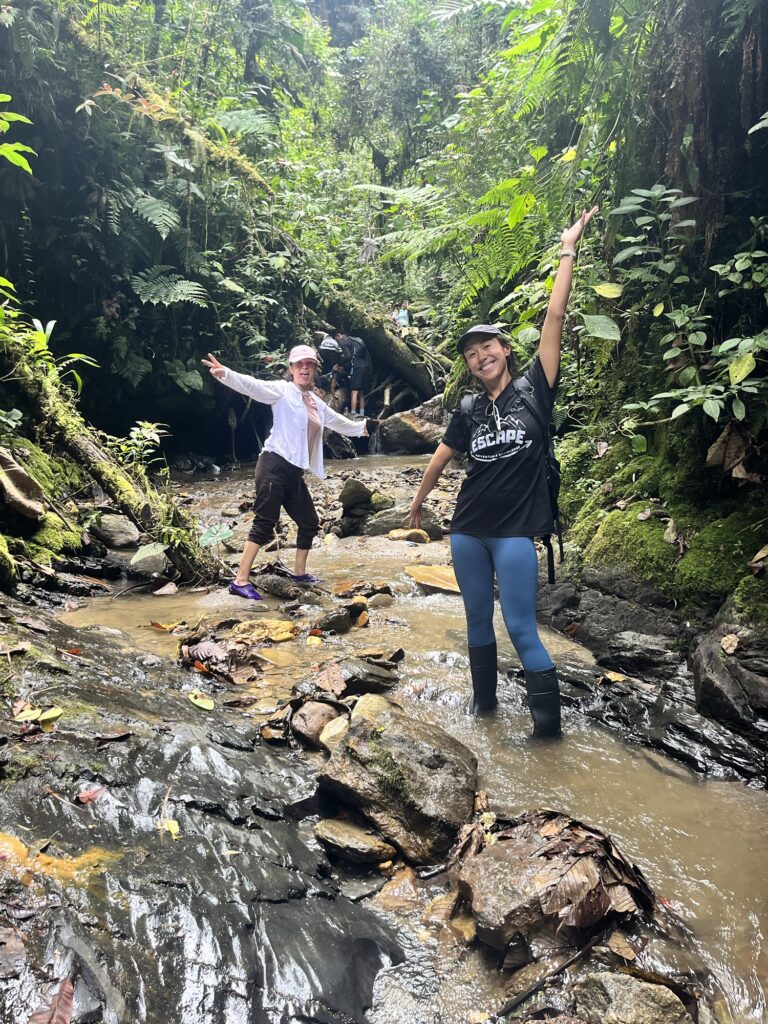
Listening Takes the Lead
I talked in an earlier post about the four branches of language learning: speaking, listening, reading, and writing. When I first arrived in Guatemala in June 2022, my limited speaking ability was better than my listening. I’d spent a lot of time practicing with apps, and knew how to say some basic things, but I’d spent almost no time interacting with people speaking at a conversational pace, so when they responded to me, I had a really hard time understanding.
But now that’s flipped. I’m at a point where my listening comprehension is my strongest point. I understand most of what most people say to me. I can listen to books and watch movies in Spanish. I’ve started to understand songs, which has historically been more difficult for me. When I receive voice recordings from people on WhatsApp, I’m (usually) not so lost. I attend kickboxing and yoga classes in Spanish. And my biggest accomplishment recently: I attended an intensive, week-long Wilderness First Responder course in Spanish.
Of course, even with listening, I still have challenges and weak points. I generally find it easier to understand Colombians because I’ve had the most experience with their accent. But even within Colombia, thicker regional and rural accents can be difficult. I also struggle when people don’t enunciate. So when someone is older and maybe missing a few teeth, it’s much more difficult. And if there’s background noise like traffic or loud music, my understanding drops off a lot. Combine all those factors and I’m pretty much back to my 2022 levels of comprehension.
Remaining Deficits
In my Wilderness First Responder course, I was very conscious of the fact that speaking is currently my weakest branch. While I could easily understand lectures and take direction in our practical workshops and emergency simulations, I wasn’t as comfortable giving orders or playing the role of team lead. Though I know I can make myself understood and communicate anything I need to, I’m aware that I still make a lot of mistakes. And in a high-pressure situation, I feel self-conscious about needing a little extra time to think about grammar, pronunciation, and phrasing. I know that this is something that will improve with time, but it can still be frustrating.
I’ve also noticed that even though I can read and write better than I speak, my pace is a lot slower than when I’m reading or writing in English. This is to be expected, but because reading and writing are some of my strongest skills in English, the noticeable deficit can be a little daunting sometimes. When I’m reading aloud, I sometimes I struggle with the pronunciation of words, especially when they’re cognates of their English translations (i.e. they come from the same root, have similar spelling, but they sound pretty different, so I get tripped up on the extra syllables).
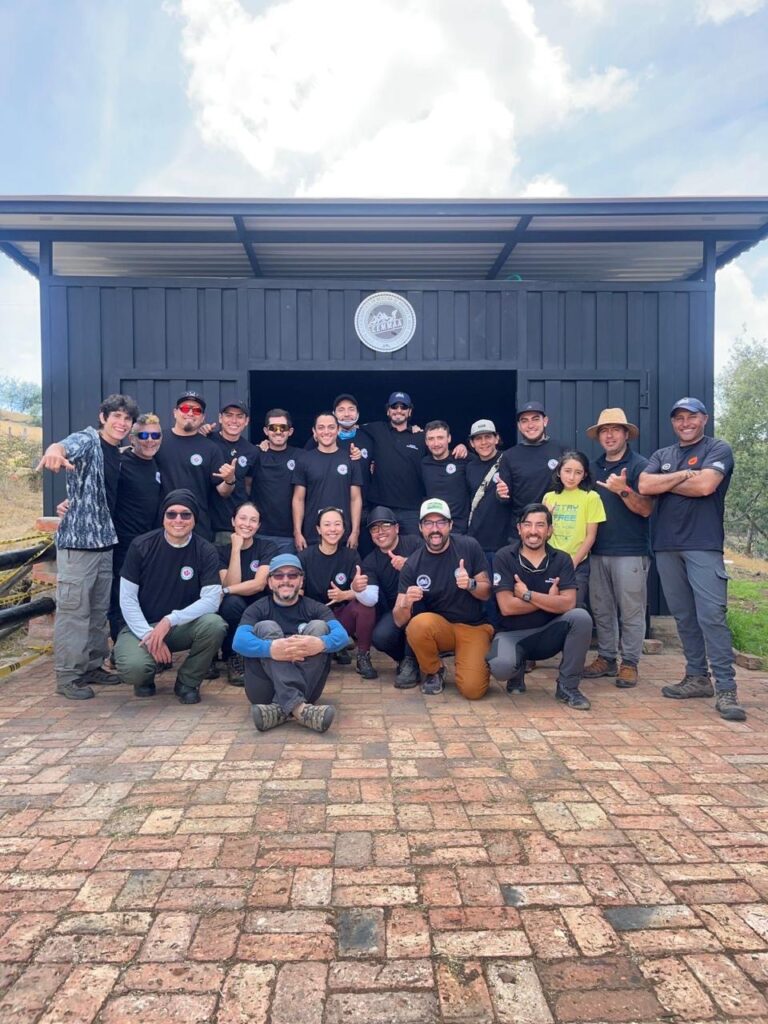
The Emotional Aspect
Now that I’m farther along in the process of learning Spanish, I have fewer emotional ups and downs. Even though I still experience frustrations, I don’t find myself getting as discouraged or down on myself about it. On the flip side, I do still have some of those moments of sudden recognition and gratitude, where I can appreciate how cool it is to be where I am now.
Nonetheless, have noticed that interacting in Spanish uses up my social battery a lot faster than interacting in English. I’m still less likely to speak up in group conversations, and even less so after a long day. If I’m feeling tired, I’d rather be alone than go out and speak Spanish. If I’m being honest, I’m the same way in English. But in English I have a higher tolerance, and I can operate effectively on less energy.
My Goals for the Next Year
The next level of CEFR proficiency after B2 is C1, and I think at that level I’ll be comfortable calling myself fluent in Spanish. To me, attaining fluency will mean reaching a level of “unconscious competence.” I’m most looking forward to that characteristic feeling of ease, of not having to think too hard about what I want to say, and of not feeling too self-conscious about my remaining deficits. My hope is to reach C1 in the next year through continued immersion, lessons, reading, and writing.
How I’m Learning Now
Couple’s Language Exchange
My boyfriend is Colombian, and about a year ago, he and I adopted the custom of speaking one day in English and the next in Spanish. By alternating every day, we both get to practice a lot and reap the benefits of dating a native speaker. We correct each other’s errors, teach each other new vocabulary words and colloquialisms, and have someone to ask whenever an unknown pops up. It’s something we both enjoy, and we stick to it pretty strictly.
This custom is particularly special because I’ve noticed that relationships between bilingual people (romantic or not), tend to start in one language and then stick to that language. For some reason it’s difficult to flip the switch once a relationship’s language has been established, even if both people speak the same two languages. And in a romantic partnership or any other relationship where you’re interacting a lot, this can result in lopsided learning. One partner often ends up way more skilled than the other. When I first met my boyfriend, we communicated almost exclusively in Spanish. While it was really beneficial for me to speak only Spanish with him early on, I’m happy that we’re avoiding the trap of getting stuck in one language. I’m looking forward to seeing how much we’ll both improve using this method.
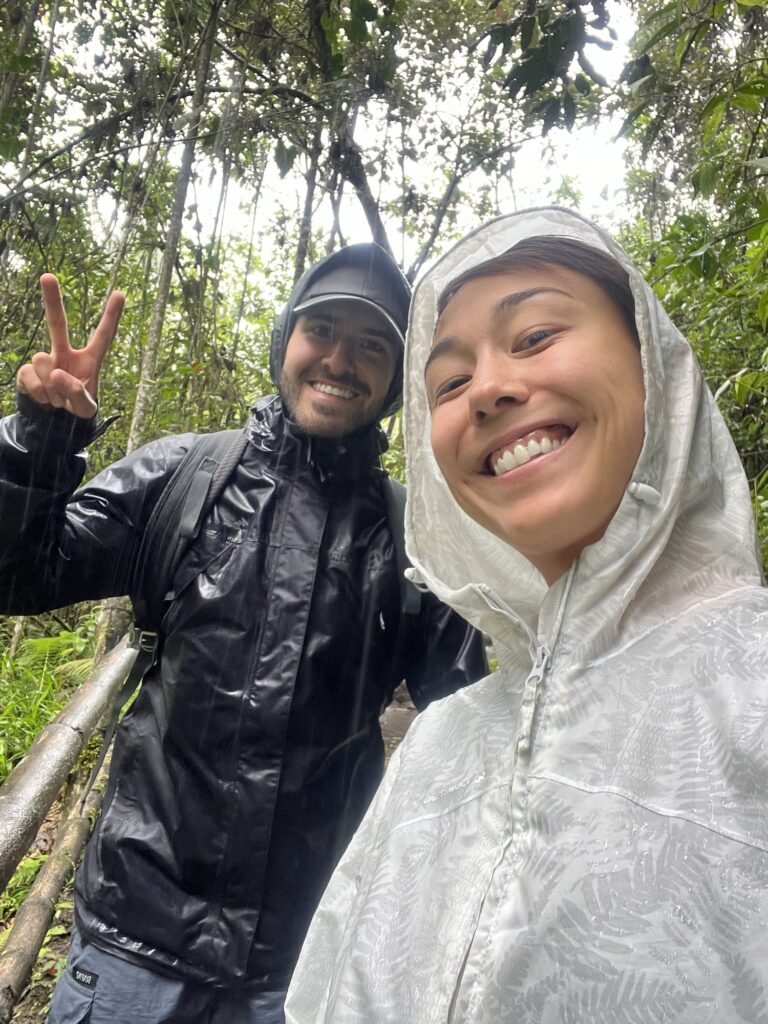
BaseLang
I’ve talked about this before, but it’s still an important part of my learning journey. My number one tool for accelerating my learning right now is BaseLang, which is the online Spanish lesson platform I started using about a year ago. I was really dedicated for about a month in early 2023, while I was living with a Colombian family and teaching at their small-town English school. The combination of those factors helped me to reach a new level of competence. Then I took an extended break while I continued to travel. About four months ago, after I got settled in Colombia and decided to dedicate more energy and resources to learning Spanish, I started the BaseLang program again. My favorite things about BaseLang are:
- The convenience and flexibility. There are hundreds of instructors, so I can always book a lesson with a few minutes’ notice. Or if I want to make sure to get on my favorite instructors’ schedules, I can book up to 5 days in advance. There are time slots at all hours of the day and night because the instructors live all over the world (though primarily in Latin America). And if I need to cancel last minute, it’s no big deal.
- The value. For someone like me who is committed to learning at an accelerated pace, the unlimited lesson structure is great. At $179 USD a month, if you’ve got enough time to dedicate to it, it can easily be the lowest cost per hour for private Spanish classes. If not, they also give the option to pay $9 USD per hour individual lessons, and I was doing that a bit during my extended break.
BaseLang has a curriculum called Real World that teaches vocabulary and grammar concepts, as well as electives, which give more in-depth vocabulary and discussion questions to talk about particular topics. But you always have the option to guide your own learning, opting for conversation practice or bringing your own materials to work on.
How I Use BaseLang
For the last couple of months, I’ve been doing about two hours of BaseLang Monday through Friday. When I was studying at in-person schools in Guatemala, I found that more than three hours a day was too much for me. In BaseLang, I have a handful of teachers who I like best. But whenever one of them isn’t available for the time slot I want, I just try someone new. Lately, I mostly try to take classes with Colombians since I’m living in Colombia and want to learn to speak Spanish specific to this region. I also study with several Venezuelan instructors because their speech is similar and many of them have immigrated to Colombia in recent years. Peruvians and Ecuadorians are also easy for me to understand.
I recently finished all of the BaseLang Real World curriculum content, so I’ve begun their DELE preparation content. DELE stands for Diploma de Español como Lengua Extranjera (Diploma in Spanish as a Foreign Language), and it’s an internationally recognized test to prove your Spanish proficiency. You can use the DELE for job and university applications, and in some cases it’s required if you want to gain citizenship in a Spanish-speaking country. There is a DELE test for each of the CEFR levels (A1-C2), and though I’m not sure if I’ll end up taking the actual exam, I think BaseLang’s DELE prep curriculum will be a good way for me to reach C1 by 2025. One of their stated goals is to help learners balance out their skills in the four branches of language learning, which as I mentioned, is something I feel like I need.
If you’re going to sign up for BaseLang, please use my referral code: I3VuDiMkCf. Even without this referral program, I’d recommend the platform because of everything I described above. But if you enroll because of me, they’ll give me a free month, which I will definitely put to use.
Audiobooks
Audiobooks are one of my main forms of entertainment. I barely watch TV, but I listen to a lot of books. Back when I first got to Colombia in October 2022, I started listening to the Harry Potter books in Spanish, and initially I had to listen at 85% speed to understand. But it got easier and easier, and I eventually finished all seven books (for free on the Libby app!) listening at normal speed. I’ve listened to a few other books in Spanish since then, and I think it’s one of the biggest contributing factors to the improvement of my listening comprehension in recent months.
Duolingo
Some people are surprised to learn that I’m still using Duolingo regularly. The Duolingo Spanish course is actually quite robust. I’ve been on Duolingo Spanish for four years and I’m currently working on the last unit of the course. I’ve finished all of the grammar lessons, but it’s still a good source of vocabulary and practice for me. Sometimes the gamification makes it easy to focus on aspects of the app that aren’t strictly about learning a language. That said, I’ve currently got a streak of 660+ days, and I won the Diamond League last week (IYKYK). I think even if you do get really motivated by the leagues, challenges, and points, it’s also pretty hard to pursue those secondary goals without learning anything.
But if you’re in an early stage of your learning journey, and you only have 20 minutes a day to dedicate to practice, I think Duolingo is not the most effective tool on the market, even though it might be the most addictive and fun. I wrote in an earlier post about Language Transfer, and I stand by that recommendation.
Vocabulary
Anki is still my go-to app for creating vocabulary flashcards, and I mentioned it in my post about getting the most out of your smartphone while traveling. I like studying vocabulary using the spaced repetition method because the app remembers which words have been difficult for me and shows those more frequently until I’ve learned them. Though if I’m being honest, I think there are other apps with the same spaced repetition technology that have a nicer UI. One I’ve tried and liked is called Space.
Whenever I learn a new word in my BaseLang classes or in real-life conversations, I add it to my Anki deck to practice. Sometimes I’m not very on top of this, but when I am, it’s a great method.
Someone a Past Me Would Admire
I wrote a while back about designing and planning my life according to what “Ideal Sachi” would do. I was talking with a friend recently about how this mindset works in reverse, too. I can look at my life now, and recognize the things that Past Sachi would be proud of. When I was nineteen, I got the idea into my head that one day I wanted to do a long-term solo trip abroad and live in another country. When I was even younger, I decided that I wanted to be bilingual one day. If you told nineteen-year-old Sachi that at 30 I’d be backpacking solo through Guatemala and at 32 I’d be speaking passable Spanish and living in the Colombian Andes, she would’ve been very impressed. By the time I’m 35, my Spanish might even be considered excellent. With every passing season and every passing year, I’m turning myself more into the person I always wanted to be, and I have to say, it’s pretty cool.
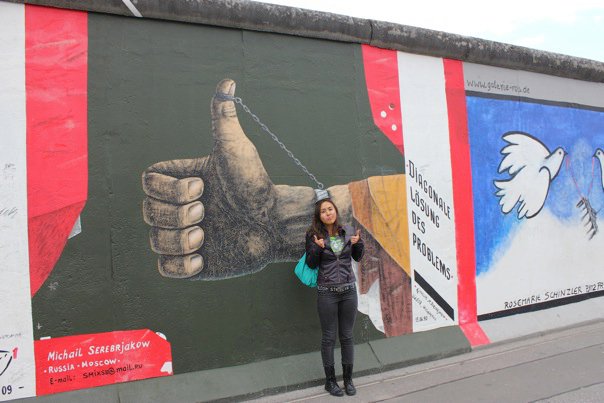
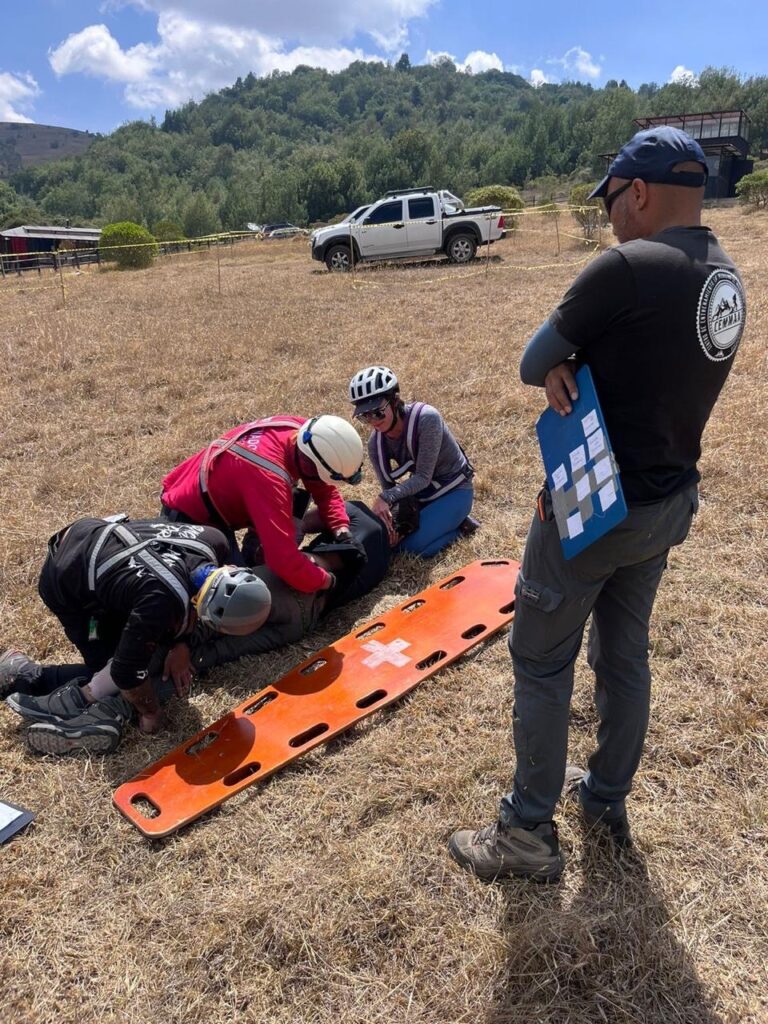
Loved every bit of it. You’ve inspired me to commence living my life in seasons too!
💕thanks Kenna! Happy to hear it resonated with you too
I’m impressed and proud of you, also. I enjoy your writings. You are really cool!
Thanks Aunty Sara! <3